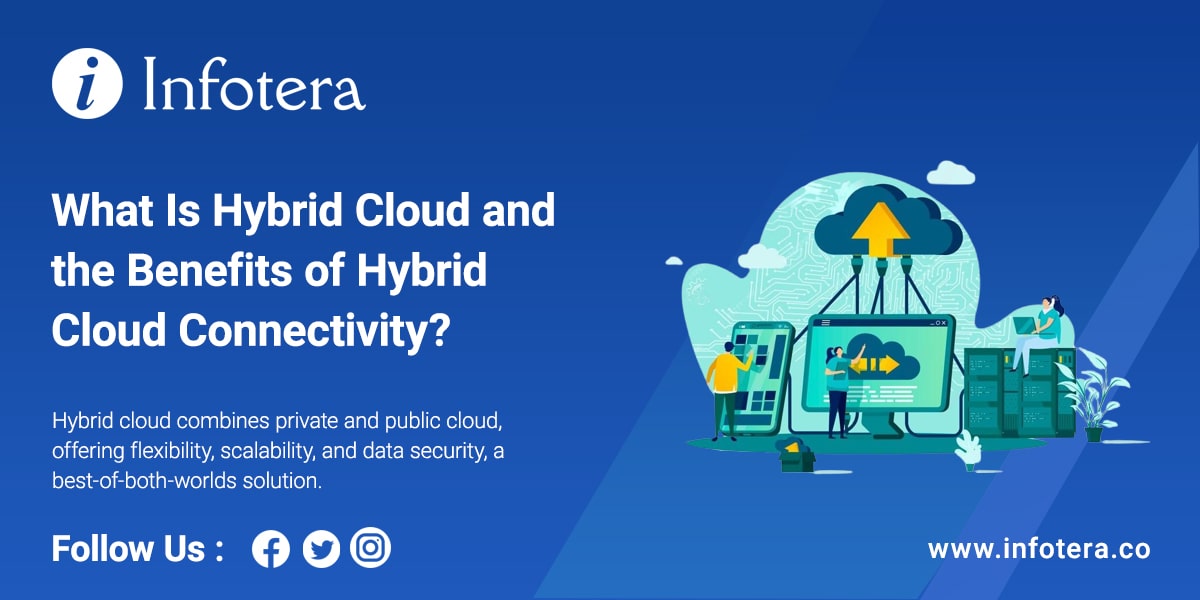The hybrid cloud is one of the most popular cloud computing models today. As more businesses move their data and applications into the cloud, many adopt a hybrid approach to get the best of both private and public cloud environments. Here, we’ll look at what exactly a hybrid cloud is and some of its key benefits.
What is Hybrid Cloud?
A hybrid cloud is a computing environment that combines a public cloud and a private cloud. It allows businesses to run some of their infrastructure and applications in the public cloud while keeping their most sensitive data and workloads in their personal or on-premises data centers. A hybrid cloud provides greater flexibility, security, and economic benefits than relying solely on public or private clouds.
In a hybrid cloud model, the public and private clouds are connected via a secure vast area network (WAN). This allows a seamless flow of services and data across the environments. The hybrid approach gives businesses complete control over their most critical systems and data in their private cloud while allowing them to tap into resources in the public cloud when needed.
Critical Characteristics of Hybrid Cloud
Some key characteristics of a hybrid cloud architecture include:
- Combines public and private clouds – Resources are distributed across public and private data centers or infrastructure. This provides businesses with both data security and scalability.
- Allows workload portability – Workloads can be shifted between public and private clouds for greater flexibility. This provides the ability to scale resources when demand spikes.
- Consistent security and compliance – Policies can be unified across environments for consistency. However, private cloud resources generally have greater control and safety.
- Optimized for changing needs – Resources can be scaled and shifted as needs change. The hybrid model is ideal for fluctuating or unpredictable workload demands.
- Uses orchestration to connect environments – The public and private elements are integrated using orchestration software and APIs. This enables seamless workflow and communication between the different platforms.
Benefits of Hybrid Cloud
Adopting a hybrid cloud strategy offers several significant benefits:
Flexibility
A hybrid cloud architecture provides the most flexibility in deploying, accessing, and managing distributed computing resources. Businesses can maintain on-premises infrastructure for systems and data requiring enhanced security while leveraging the public cloud to scale resources.
Cost Efficiency
Businesses only pay for public cloud services as they use them rather than having to purchase resources upfront. A hybrid approach allows organizations to utilize the public cloud’s scalability and cost benefits while keeping sensitive assets on-premises.
Security
Private cloud resources allow greater control, security, and sensitive data governance on-premises. Organizations can adhere to internal security and compliance policies more efficiently. Critical data or regulated data can remain protected in the private cloud.
Reliability
A hybrid cloud utilizes public and private environments for excellent reliability and resiliency. If one environment experiences downtime, services and data can fail on another site. Distributed resources make it easier to recover from outages.
Operational Efficiency
IT teams gain greater efficiency by using self-service provisioning of public cloud resources. Organizations also spend less time on infrastructure procurement and maintenance. However, they maintain visibility of critical systems through the private cloud elements.
Use Cases for Hybrid Cloud
There are many scenarios where adopting a hybrid strategy makes sense:
- Managing workload spikes – public cloud provides capacity on demand.
- Maintaining uptime during maintenance – shift workloads between environments
- Reducing capital expenditures – avoid building for peak capacity
- Accelerating application development – access additional resources quickly
- Providing regional power – deploying resources close to users around the world.
- Meeting security, compliance, or policy requirements – keep sensitive data on-premises
- Integrating cloud services with in-house apps – extend capabilities while controlling critical systems.
Implementing a Hybrid Cloud
Here are some best practices to follow when implementing an effective hybrid cloud:
- Evaluate application architectures and requirements. Assess technical feasibility and cloud readiness.
- Enhance network connectivity between public and private environments. Ensure adequate bandwidth, availability, and security.
- Standardize practices for security, availability, resiliency, and compliance across environments.
- Use workload placement strategies that align application needs with the best location.
- Employ containers and microservices to enhance portability across environments.
- Manage public and private resources through a unified control plane.
- Leverage robust automation, orchestration, and DevOps processes.
A well-planned hybrid cloud allows organizations to optimize operations, costs, and efficiencies. With the right strategy, a hybrid cloud can balance control, flexibility, and scalability across IT environments. The hybrid model gives enterprises the best private and public cloud worlds.

